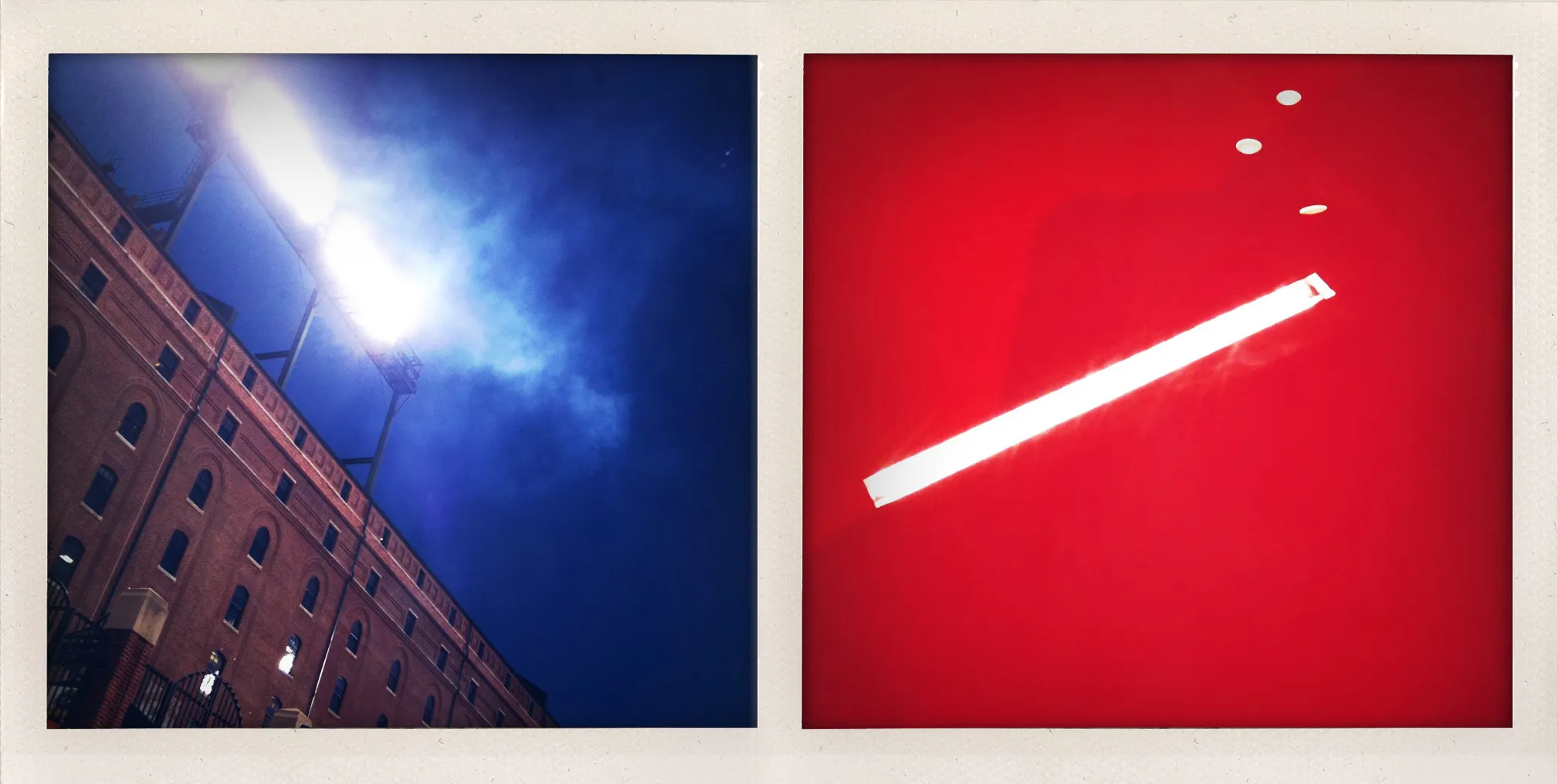Smoke

This diptych titled Smoke explores the duality of perception by contrasting an outdoor stadium’s atmospheric haze with an abstract indoor reflection. The pairing suggests parallel representations of “smoke”—literal and symbolic—inviting viewers to contemplate the interplay of context, form, and visual metaphor.
In the diptych Smoke, two visually distinct but thematically linked images are paired to interrogate how context shapes perception. On the left, a glowing stadium light bathes a red-brick ballpark in artificial luminescence, dispersing thick smoke or fog into the night sky. On the right, a high-key interior reflection—likely from a fluorescent light—cuts diagonally across a saturated red field, evoking the silhouette and glow of a lit cigarette.
The left panel situates us in a familiar public setting. The architecture, with its rhythmic windows and verticality, is recognizable as that of a historic baseball stadium. The upward perspective amplifies the monumental scale of the lighting rig, which blasts white light into a hazy sky. The “smoke” here appears ambient and environmental—possibly fog or exhaust from an event—its presence accentuated by the strong backlight. The composition leans into atmospheric drama, with cool blue tones contrasting against the warm brick facade.
The right panel offers no such grounding. We are inside an indeterminate space, faced with a flat red plane punctuated by a slashing diagonal of white. The visual elements are minimal, abstract, and ambiguous. Yet, through compositional mimicry, this second image mimics the form of a cigarette suspended in space. The strip light’s glow, its slightly angled placement, and the surrounding red evoke the heated ember of burning tobacco, suspended in a void. The abstraction invites associative interpretation, collapsing the visual into the symbolic.
Together, the panels form a conceptual echo. The “smoke” in the left image emerges from collective activity—industrial, civic, or celebratory—while the “smoke” on the right hints at the solitary ritual of smoking, its physical trace replaced by the ghost of an idea. Both forms of smoke are illuminated but neither is the primary subject. Instead, light—its quality, intensity, and diffusion—becomes the vehicle for understanding what cannot be seen directly.
The title Smoke operates as both descriptor and cipher. It offers viewers a clue but also challenges them to consider how something so ephemeral and formless can be rendered through light and architecture. In this sense, the work engages with a broader tradition in photography and conceptual art: the visualization of the intangible, the tension between documentation and suggestion.
More broadly, the diptych reflects on how modern life generates and consumes spectacle. The stadium is a site of shared experience, performance, and distraction, while the solitary cigarette stands in for personal vice or momentary pause. The juxtaposition implies a conversation between collective and individual modes of consumption, each leaving behind a trace—whether in the sky or the air.
By placing these two scenes side by side, the artist does more than compare two visual fields; they suggest that meaning arises not from what is pictured, but from how we interpret light, color, and form in relation to the title and to each other. Smoke, then, is not merely what is seen—it is what is felt, remembered, or inferred. The diptych becomes a meditation on perception, illusion, and the thin line between clarity and ambiguity.
Essay written: May 2025